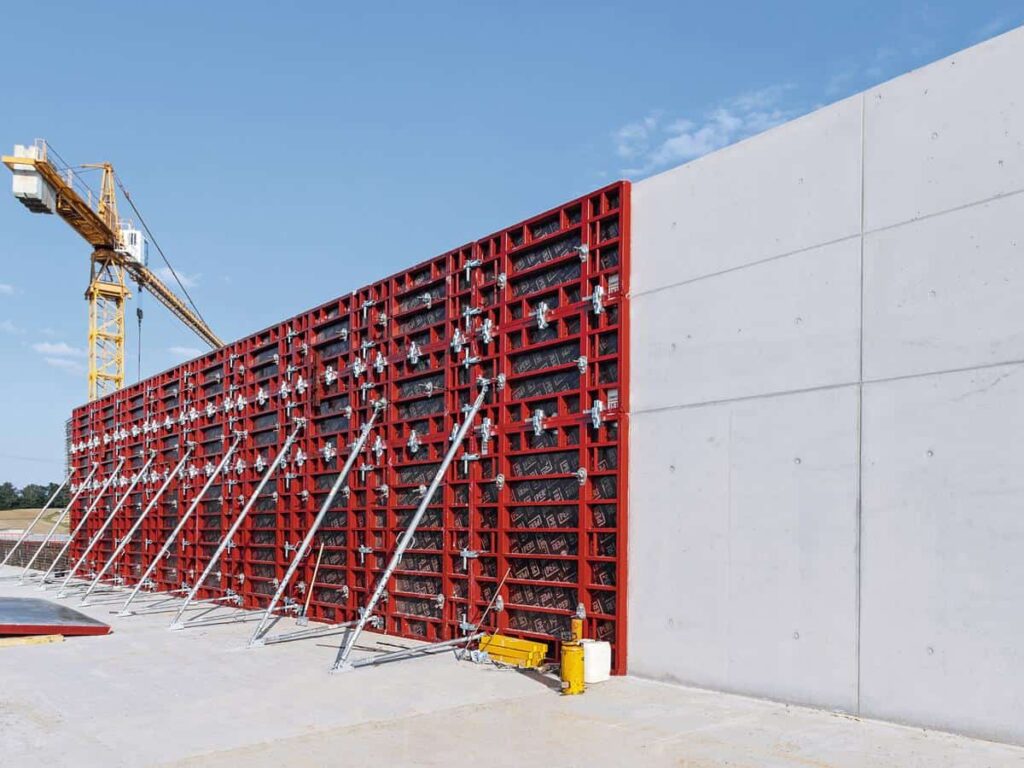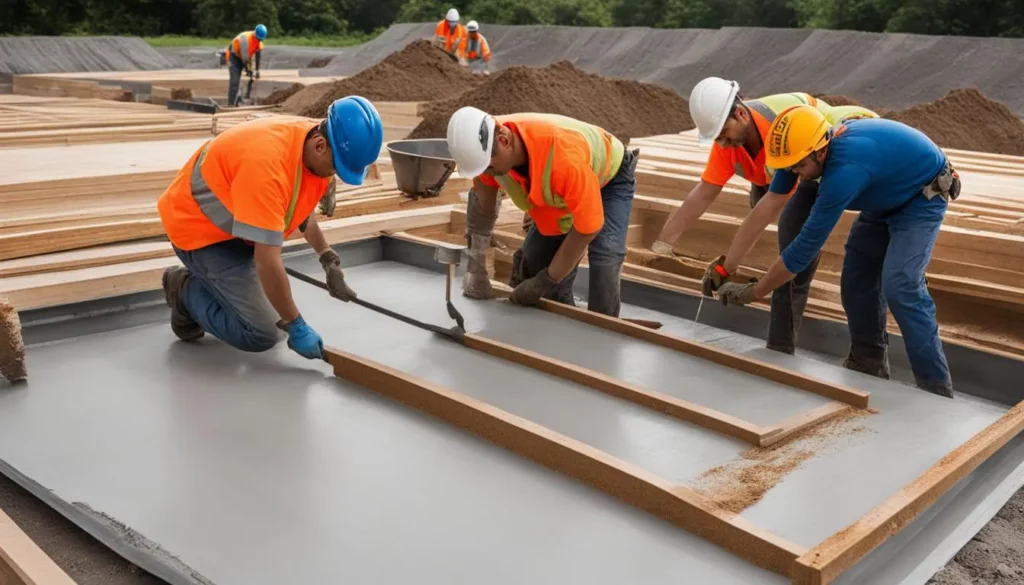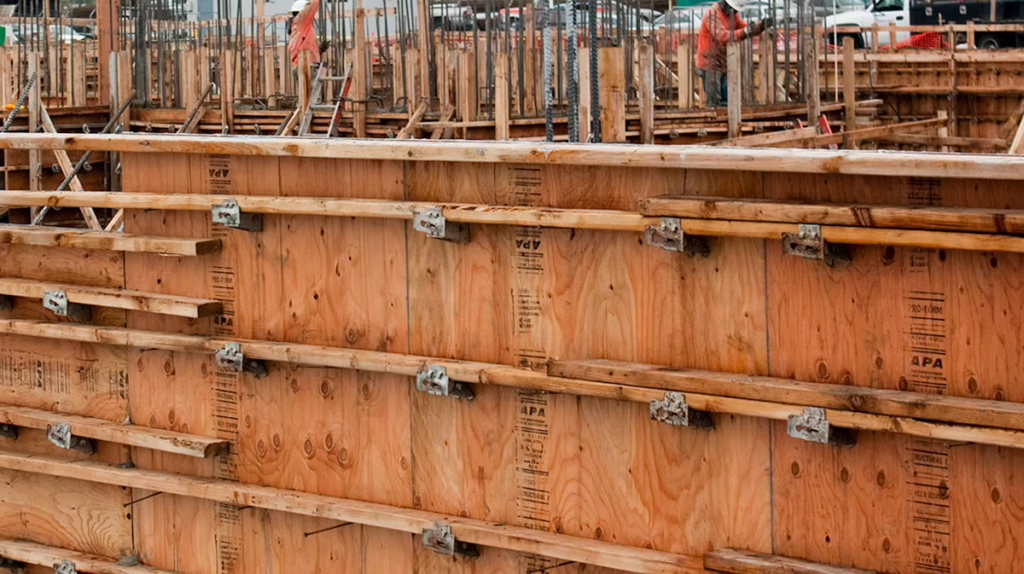Maintaining LVL formwork for repeated use is essential to ensure the success and efficiency of construction projects. LVL formwork, or laminated veneer lumber formwork, is a popular choice for its durability and versatility in various construction applications. By understanding the importance of LVL formwork, its key components, and implementing best practices for maintenance, construction professionals can maximize the lifespan of their formwork and optimize project efficiency.
Understanding LVL Formwork
LVL formwork refers to the use of laminated veneer lumber panels in creating temporary molds for concrete. These panels are made by gluing thin veneer sheets of wood together to form sturdy and reliable formwork components. LVL formwork offers several advantages, including high load-bearing capacity, dimensional stability, and resistance to warping or twisting.
Utilizing LVL formwork in construction projects not only ensures structural integrity but also promotes efficiency and cost-effectiveness. The precise engineering of LVL panels allows for easy customization to fit various shapes and sizes, reducing the need for extensive modifications or adjustments during the concrete pouring process. This adaptability streamlines construction timelines and minimizes material wastage, making LVL formwork a sustainable choice for contractors seeking both quality and efficiency in their projects.
Definition and Importance of LVL Formwork
LVL formwork is an essential temporary structure used in concrete construction. It serves as a mold or shuttering system that supports and shapes the poured concrete until it sets and gains sufficient strength. Properly maintained LVL formwork ensures the desired structural integrity and finish of concrete elements, such as slabs, walls, columns, and beams.
Moreover, the versatility of LVL formwork extends beyond its primary function in concrete construction. These panels can also be utilized in various architectural applications, such as creating curved or intricate concrete designs. The smooth surface of LVL panels allows for superior concrete finishes, enhancing the aesthetic appeal of structures and reducing the need for extensive surface treatments post-construction.

Key Components of LVL Formwork
LVL formwork consists of various components that work together to provide stability and strength. The main components include LVL panels, walers, stiffeners, braces, and connectors. LVL panels form the primary structure, while walers distribute the load evenly. Stiffeners enhance rigidity, braces provide additional support, and connectors ensure the proper alignment and connection between formwork elements.
Each component plays a crucial role in maintaining the integrity of the formwork system during the concrete pouring and curing process. The collaborative effort of these components not only supports the weight of the concrete but also resists external forces such as wind or vibrations, ensuring a safe working environment for construction crews and a high-quality end result for the project. Learn more about vibrations click here.
The Lifespan of LVL Formwork
The durability of LVL formwork greatly influences its lifespan and the number of times it can be reused. Understanding the factors affecting LVL formwork durability and knowing the signs of wear and tear are crucial in ensuring its performance throughout multiple construction projects.
When considering the lifespan of LVL formwork, it is essential to take into account the quality of the materials used in its construction. High-quality LVL (Laminated Veneer Lumber) with proper bonding and treatment can significantly enhance the durability of the formwork. Additionally, the manufacturing process, including the pressing and curing of the LVL panels, plays a vital role in determining their longevity.
Factors Affecting LVL Formwork Durability
Several factors can affect the durability of LVL formwork, including exposure to moisture, chemical reactions with concrete, excessive loading, and improper handling. Moisture can cause swelling or warping of the LVL panels, while chemical reactions may lead to deterioration. Excessive loading and mishandling can result in structural damage and reduce the formwork’s lifespan.
Furthermore, environmental conditions such as temperature fluctuations and prolonged exposure to sunlight can also impact the durability of LVL formwork. Proper storage and maintenance practices, such as keeping the formwork dry and protected from direct sunlight when not in use, can help prolong its lifespan and maintain its structural integrity. Learn more about factors affecting LVL formwork durability visit at https://www.researchgate.net/publication/343272941_Analysis_of_factors_influencing_formwork_material_selection_in_construction_buildings.

Signs of Wear and Tear in LVL Formwork
Regular inspection is necessary to identify signs of wear and tear in LVL formwork. Common indicators include cracks, delamination, decay, or deformation of the LVL panels, loose or damaged connectors, and visible signs of corrosion or rust. Promptly addressing these issues is crucial to prevent further damage and ensure the safety and performance of the formwork.
Proper handling and storage practices, routine maintenance, and timely repairs are essential for maximizing the lifespan of LVL formwork. By understanding the factors that influence durability and being vigilant in detecting signs of wear and tear, construction professionals can optimize the performance and longevity of their formwork, ultimately improving the efficiency and safety of their projects.
Best Practices for LVL Formwork Maintenance
Implementing best practices for LVL formwork maintenance is key to extending its lifespan and optimizing project efficiency. Regular inspection and cleaning, proper storage and handling, as well as timely repairs, are essential elements of an effective maintenance plan.
Regular Inspection and Cleaning
Schedule regular inspections to identify any signs of damage or deterioration in the LVL formwork. Inspect the panels, walers, stiffeners, braces, and connectors for cracks, delamination, decay, or deformation. Additionally, clean the formwork thoroughly after each use to remove debris, concrete residue, and contaminants that may compromise its durability and performance.
During the inspection process, pay close attention to the corners and edges of the formwork, as these areas are more prone to wear and tear. Look for any signs of stress or fatigue, such as splintering or fraying, and address them promptly to prevent further damage. By conducting regular inspections, you can catch potential issues early on and take the necessary steps to maintain the formwork’s structural integrity.
Proper Storage and Handling
Proper storage and handling of LVL formwork are critical to preventing damage and prolonging its usable life. Store the formwork components in a dry and well-ventilated area to minimize exposure to moisture and humidity. Stack the panels and other components systematically, ensuring they are not in direct contact with the ground and protected from any potential impact or crushing forces.
When handling the formwork, use appropriate lifting equipment and techniques to avoid excessive strain on the components. Be mindful of the weight limits specified by the manufacturer and distribute the load evenly to prevent overloading. By following proper storage and handling practices, you can minimize the risk of accidental damage and ensure the formwork remains in optimal condition for future use.
Repairing Damages and Defects
Timely repairs are essential to address any damages or defects in the LVL formwork. Cracked panels, loose connectors, or damaged braces should be promptly repaired or replaced to maintain the formwork’s structural integrity. Regularly inspect the formwork during and after each use to identify any potential issues that require repair or replacement.
When performing repairs, use appropriate adhesives, fasteners, or reinforcement techniques recommended by the manufacturer. Ensure that the repaired areas are properly sealed to prevent moisture infiltration and subsequent deterioration. By addressing damages and defects in a timely manner, you can prolong the lifespan of the formwork and avoid costly replacements or project delays.
Remember, maintaining LVL formwork is not just about preserving its physical condition; it also contributes to the overall safety and efficiency of your construction projects. By implementing these best practices, you can ensure that your LVL formwork remains in optimal condition, allowing you to achieve consistent and high-quality results.
Safety Considerations in LVL Formwork Maintenance
Maintaining safety standards during LVL formwork maintenance is crucial to protect workers and ensure a safe working environment. Adequate personal protective equipment (PPE) should be worn, and safety protocols should be followed diligently.
When it comes to LVL formwork maintenance, it’s not just about following the rules; it’s about fostering a culture of safety within the team. Regular safety training sessions can help reinforce the importance of PPE and proper protocols. Encouraging open communication about safety concerns and near-misses can also help identify potential risks before they escalate.
Personal Protective Equipment (PPE) for Maintenance
Workers performing maintenance tasks on LVL formwork should wear appropriate PPE, including gloves, safety goggles, hard hats, and steel-toed boots. This protective gear helps minimize the risk of injury from potential hazards, such as sharp edges, falling objects, or splinters.
Investing in high-quality PPE is an investment in the well-being of your workers. Conducting regular inspections of PPE to check for wear and tear can ensure that they provide the necessary protection. Additionally, providing training on how to properly wear and maintain PPE can enhance its effectiveness in safeguarding workers.
Safety Protocols during Repair and Inspection
Follow established safety protocols when repairing or inspecting LVL formwork. Ensure that the work area is clear of any obstructions or hazards. Communicate and coordinate with other workers to maintain a safe environment. Additionally, use proper tools and equipment for repairs, and avoid any unsafe practices that could compromise personal safety.
Regular maintenance checks can help identify potential safety issues before they become major concerns. Implementing a system for reporting and addressing safety hazards promptly can prevent accidents and injuries. By prioritizing safety in LVL formwork maintenance, you not only protect your workers but also contribute to a more efficient and productive work environment.
The Impact of Proper Maintenance on Project Efficiency
Proper maintenance of LVL formwork has a significant impact on project efficiency. Well-maintained formwork not only extends its usable life but also offers cost and time efficiency benefits, ultimately leading to successful project completion.
Cost-Efficiency of Well-Maintained LVL Formwork
By properly maintaining LVL formwork, construction professionals can reduce the need for frequent replacements or repairs, resulting in cost savings. The initial investment in high-quality formwork can yield significant returns when properly cared for and reused across multiple projects, minimizing the overall project expenses.
When formwork is well-maintained, it remains structurally sound and free from defects that could compromise its performance. This ensures that the formwork can be used repeatedly without the risk of failure, reducing the need for additional expenditures on new formwork for each project. The cost-efficiency of well-maintained LVL formwork becomes even more apparent when considering the long-term benefits it provides.
Time Efficiency and Project Scheduling Benefits
Well-maintained LVL formwork allows for efficient construction scheduling. When formwork is in good condition and readily available, contractors can proceed with concrete pouring without delays. This helps streamline project timelines, improve productivity, and meet project milestones effectively.
Moreover, proper maintenance of LVL formwork includes regular inspections to identify any potential issues or damage. By detecting and addressing these problems early on, construction professionals can avoid unexpected delays during the construction process. This proactive approach to maintenance ensures that the formwork is always ready for use, minimizing downtime and maximizing productivity.
Furthermore, well-maintained formwork contributes to a safer working environment. By addressing any safety concerns promptly, such as loose or damaged components, construction professionals can prevent accidents and injuries on the job site. This not only protects the well-being of the workers but also avoids potential project delays due to safety violations or investigations.
In conclusion, maintaining LVL formwork for repeated use requires understanding its key components, monitoring for signs of wear and tear, and implementing best practices for inspection, cleaning, storage, and repairs. By prioritizing safety considerations and recognizing the impact of proper maintenance on project efficiency, construction professionals can ensure the longevity and performance of their LVL formwork, leading to successful and cost-effective construction projects.

